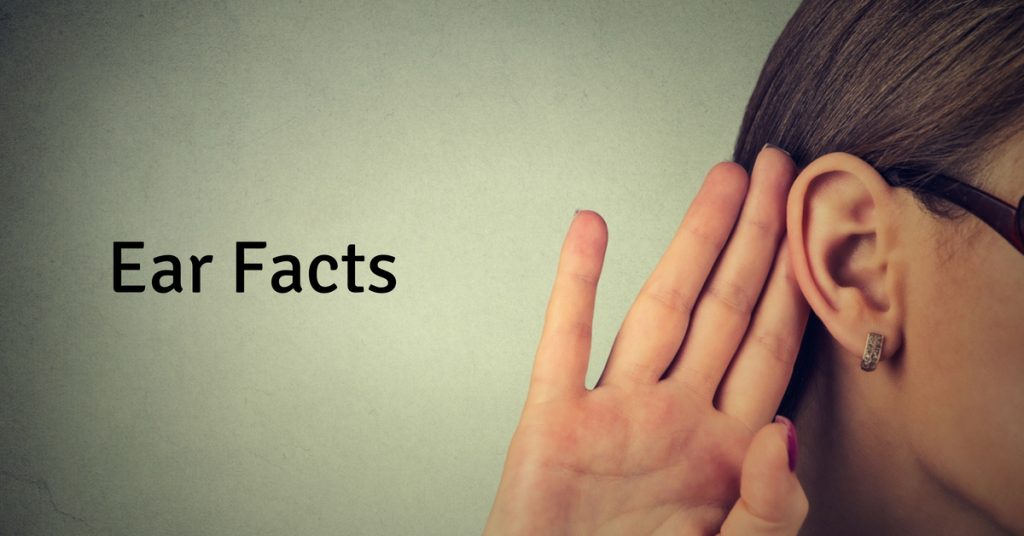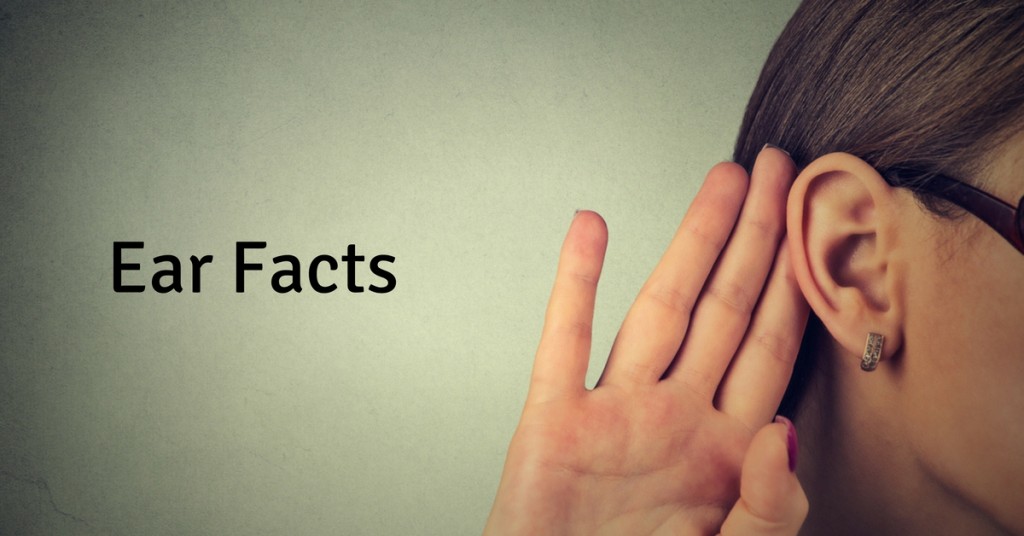December 8th is “Take it in the Ear Day,” one of those weird, silly “holidays” that float around the Internet. We don’t really know what this one is supposed to mean…so here are just some interesting facts about the ear and hearing.
- Your ear isn’t really your ear. Well, not totally. Medically speaking, your ear, where all the hearing function occurs, happens in the middle ear and the inner ear, the parts of the ear that are safely tucked away inside of your head. The floppy skin things on each side of the head? Those are technically the outer ears.
- Similarly, when you clean your ears (you do clean your ears, don’t you?), you’re only finishing a job that the body does naturally. Microscopic hairs in the ear canal work to push ear wax out of the important hearing centers and into the cavernous skin folds of the outer ear. (Earwax is created by skin glands in the ear canal to carry dirt and dust out of there.)
- The three smallest bones in the human body are all located in the middle ear. Named the stapes, malleus, and incus, put together they could all easily fit on top of a dime.
- The first devices that could reasonably be called hearing aids appeared in Europe in the 17th century. In the 1600s, a French mathematician named Jean Leurechon devised the ear trumpet. Different designs were created, but until the age of electricity and sound amplification in the 20th century, the ear trumpet was the hearing aid of choice for nearly 300 years. It was so-named because it looked like a trumpet—noise came into the bell and traveled downward through a tiny hole that went into the ear.
- Here’s a very simple explanation of how hearing works. Sound enters via the outer ear and moves into the middle ear, where it makes the eardrum vibrate. Those vibrations are sensed by the three tiny bones mentioned earlier, moving across all three, lastly across the stapes. The sound wave moves across the stapes to the oval window and into the inner ear’s intricate network of tubes and then the cochlea. Thousands of tiny, special hairs in the cochlea convert the sound/vibrations into electrical signals, which are sent to the brain’s hearing region via auditory nerves. The brain then interprets those electrical signals as specific sounds.
- The weird thing about earlobes is that scientists are still not quite sure why we have them. (Apparently, those scientists don’t wear a lot of earrings.) Since they are full of blood, it could have something to do with the regulation of body temperature, but this hasn’t been conclusively proven. What has been proven: Earlobes never quit growing. They reach 90 percent of full size for most people by age 9…and that final 10 percent is very slowly filled in over time.









